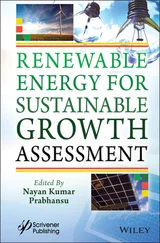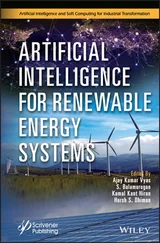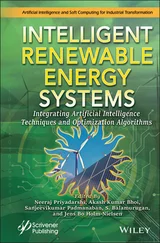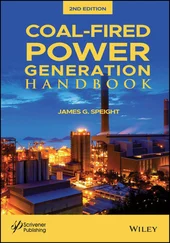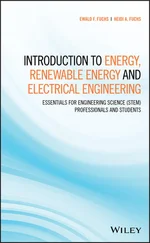James G. Speight - Encyclopedia of Renewable Energy
Здесь есть возможность читать онлайн «James G. Speight - Encyclopedia of Renewable Energy» — ознакомительный отрывок электронной книги совершенно бесплатно, а после прочтения отрывка купить полную версию. В некоторых случаях можно слушать аудио, скачать через торрент в формате fb2 и присутствует краткое содержание. Жанр: unrecognised, на английском языке. Описание произведения, (предисловие) а так же отзывы посетителей доступны на портале библиотеки ЛибКат.
- Название:Encyclopedia of Renewable Energy
- Автор:
- Жанр:
- Год:неизвестен
- ISBN:нет данных
- Рейтинг книги:3 / 5. Голосов: 1
-
Избранное:Добавить в избранное
- Отзывы:
-
Ваша оценка:
- 60
- 1
- 2
- 3
- 4
- 5
Encyclopedia of Renewable Energy: краткое содержание, описание и аннотация
Предлагаем к чтению аннотацию, описание, краткое содержание или предисловие (зависит от того, что написал сам автор книги «Encyclopedia of Renewable Energy»). Если вы не нашли необходимую информацию о книге — напишите в комментариях, мы постараемся отыскать её.
Written by a highly respected engineer and prolific author in the energy sector, this is the single most comprehensive, thorough, and up-to-date reference work on renewable energy.
Encyclopedia of Renewable Energy: Audience
Encyclopedia of Renewable Energy — читать онлайн ознакомительный отрывок
Ниже представлен текст книги, разбитый по страницам. Система сохранения места последней прочитанной страницы, позволяет с удобством читать онлайн бесплатно книгу «Encyclopedia of Renewable Energy», без необходимости каждый раз заново искать на чём Вы остановились. Поставьте закладку, и сможете в любой момент перейти на страницу, на которой закончили чтение.
Интервал:
Закладка:
The main components of wood cells are cellulose (an insoluble substance which is the main constituent of plant cell walls and of vegetable fibers such as cotton. It is a polysaccharide consisting of chains of glucose monomers.), hemicellulose (a class of substances which occur as constituents of the cell walls of plants and are polysaccharides of simpler structure than cellulose.), and lignin (a complex organic polymer deposited in the cell walls of many plants, making them rigid and woody), forming some 99 % w/w of the wood material. Cellulose and hemicellulose are formed by long chains of carbohydrates, whereas lignin is a complicated component of polymeric phenolics. Lignin is rich in carbon and hydrogen, which are the main heat producing elements. Thus, the calorific value of lignin is higher than that of cellulose and hemicellulose (both are carbohydrate derivatives). Wood and bark also contain so-called extractives, such as terpenes, fats, and phenols. The amount of wood extractives is relatively small compared to the amount of extractives from bark and foliage.
The nitrogen (N) content of wood is approximately 0.75 %, varying somewhat from one tree species to another. For example, nitrogen-fixing alder ( Alnus sp.) contains twice as much nitrogen as most coniferous trees. Wood has practically no sulfur (S) and, compared to many other fuels, the wood has a relatively low carbon content (some 50% of the dry weight) and high oxygen content (some 40% w/w), which leads to relatively low heating value per dry weight.
The collection of solid wastes is usually organized on a communal basis; in developing countries though, it may be organized (to a greater or lesser extent) on an informal basis. The treatment and disposal of solid wastes are definitely connected. Treatment is applied to recover useful substances or energy, to reduce waste volume, or to stabilize waste remains to be dumped or disposed of in landfills. Wastes may be treated before disposal to reduce the volume or to alter the characteristics of the waste which can be achieved by various physical, chemical, and biological processes, while combustion can be used to destroy some toxic organic chemicals. Where a method of waste disposal is not specified, the choice of disposal route will typically depend on (i) the availability of facilities, (ii) volume of waste material, and (iii) hydro-geological characteristics; the influence of industrial and environmental lobby groups must also be taken into account.
Provided that there is no shortage of land with suitable geological formations, landfill remains the principal final disposal route for the majority of wastes, even in highly industrialized countries. Where there is treatment, it is usually designed to reduce the volume of waste to be landfilled and includes compaction, shredding, baling, and combustion. Most solid wastes will therefore directly be disposed of in sanitary landfills.
The prefix sanitary is mainly to be understood as providing some protection for the population against airborne dust and litter, stench, rodents, and insects. Most of these nuisances can be prevented by the prompt covering of freshly dumped waste with soil. However, to be able to call a waste tip or landfill sanitary from an environmental viewpoint requires more measures to be taken. The main environmental problem associated with landfilling is pollution of groundwater. Rainwater percolating through solid waste tends to carry large amounts of pollutants to groundwater aquifers if the underlying strata are pervious or fissured. Thus, wells drawing from the aquifers will be extracting groundwater contaminated by the leachate; such a situation is often difficult to remedy. Studies have shown that the leachate from solid wastes may have a pollution load up to 15 to 20 times higher than domestic wastewater.
Landfill tends to predominate as a waste disposal mode because it is regarded as an effective but low-cost method of disposal, also for hazardous waste. Even where other methods are more suitable for environmental reasons, the higher capital and (short-term) running costs mean that they cannot compete without government intervention. However, such cost calculations take no account of the longer term. In the long run, landfill of hazardous materials may impose a larger financial burden than other methods because of the high cost of ensuring that the site remains secure for the time it takes for the waste to be rendered harmless.
Alternate Fuels – Solid Fuels
Solid fuels are those fuels that are solid under ambient conditions and remain solid under mild heating. Thus, examples of solid fuels from biofuel feedstocks include wood and wood-derived charcoal and dried dung, particularly cow dung.
Compared to gaseous fuels and liquid fuels, solid fuels are often cheaper, easier to extract, more stable to transport, and in many places are more readily available. Coal, in particular, is utilized in the generation of electricity because it is less expensive and more powerful than its gaseous or liquid fuel counterparts. However, solid fuels are also heavier to transport, require more destructive methods to extract/burn, and often have higher carbon, nitrate, and sulphate emissions. With the exception of sustainable wood/biomass, solid fuel (such as peat or coal) is typically considered to be non-renewable because it requires thousands of years to form.
Alternative Energy
Alternative energy is a term for any nontraditional energy form, source, or technology differing from the current popular forms, sources, or technologies. Currently, the term alternative energy is generally used in the context of an alternative to energy deriving from the widely-used fossil fuels and thus includes energy derived from such environmentally preferred sources as biomass, geothermal, ocean, solar, tidal action, water power, wave action, and wind power. Many definitions of alternative energy use this term interchangeably with renewable energy.
The term alternative energy is also used for energy derived from sources and technologies that do not involve the depletion of natural resources (such as fossil fuel sources) or significant harm to the environment. As such, the term alternate energy is used synonymously with the terms renewable energy and green energy or green power. The three terms have also been delineated differently even though, by most definitions, there is substantial overlap between energy forms, sources, and technologies that fit into these three categories, and alternative energy often is applied to energy without undesirable environmental consequences or with lessened environmental impact. Renewable energy generally refers most specifically to energy derived from sustainable natural resources that are constantly replenished within a relatively short time frame (such as deriving from such renewable natural resources.
Amine Washing
Amine washing (more correctly olamine washing) of a gas stream involves the chemical reaction of the amine with any acid gases with the liberation of an appreciable amount of heat, and it is necessary to compensate for the absorption of heat. Amine derivatives such as ethanolamine (monoethanolamine, MEA), diethanolamine (DEA), triethanolamine (TEA), methyldiethanolamine (MDEA), di-isopropanolamine (DIPA), and diglycolamine (DGA) have been used in commercial applications ( Table A-19). Amine washing is the primary process for sweetening sour natural gas and is quite similar to the processes of glycol dehydration and removal of natural gas liquids by absorption.
The primary process for sweetening sour natural gas is quite similar to the processes of glycol dehydration and removal of natural gas liquids by absorption. In this case, however, amine (olamine) solutions are used to remove the hydrogen sulfide (the amine process).
Читать дальшеИнтервал:
Закладка:
Похожие книги на «Encyclopedia of Renewable Energy»
Представляем Вашему вниманию похожие книги на «Encyclopedia of Renewable Energy» списком для выбора. Мы отобрали схожую по названию и смыслу литературу в надежде предоставить читателям больше вариантов отыскать новые, интересные, ещё непрочитанные произведения.
Обсуждение, отзывы о книге «Encyclopedia of Renewable Energy» и просто собственные мнения читателей. Оставьте ваши комментарии, напишите, что Вы думаете о произведении, его смысле или главных героях. Укажите что конкретно понравилось, а что нет, и почему Вы так считаете.


